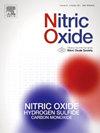Exploring medical gas therapy in hemorrhagic stroke treatment: A narrative review
IF 3.2
2区 生物学
Q2 BIOCHEMISTRY & MOLECULAR BIOLOGY
引用次数: 0
Abstract
Hemorrhagic stroke (HS) is a neurological disorder caused by the rupture of cerebral blood vessels, resulting in blood seeping into the brain parenchyma and causing varying degrees of neurological impairment, including intracerebral hemorrhage (ICH) and subarachnoid hemorrhage (SAH). Current treatment methods mainly include hematoma evacuation surgery and conservative treatment. However, these methods have limited efficacy in enhancing neurological function and prognosis. The current challenge in treating HS lies in inhibiting the occurrence and progression of secondary brain damage after bleeding, which is a key factor affecting the prognosis of HS patients. Studies have shown that medical gas therapy is gaining more attention and has demonstrated various levels of neuroprotective effects on central nervous system disorders, such as hyperbaric oxygen, hydrogen sulfide, nitric oxide, carbon monoxide, and other inhalable gas molecules. These medical gas molecules primarily improve brain tissue damage and neurological dysfunction by regulating inflammation, oxidative stress, apoptosis, and other processes. However, many of these medical gasses also possess neurotoxic properties. Therefore, the use of medical gases in HS deserves further exploration and research. In this review, we will elucidate the therapeutic effects and study the advances in medical gas molecules in HS.
探索出血性中风治疗中的医用气体疗法:叙述性综述。
出血性中风(HS)是一种由脑血管破裂引起的神经系统疾病,导致血液渗入脑实质,引起不同程度的神经功能损害,包括脑出血(ICH)和蛛网膜下腔出血(SAH)。目前的治疗方法主要有血肿引流手术和保守治疗。然而,这些方法在改善神经功能和预后方面的效果有限。如何抑制出血后继发性脑损伤的发生和进展是目前治疗HS的挑战,这是影响HS患者预后的关键因素。研究表明,医用气体疗法越来越受到重视,并已证明对中枢神经系统疾病有不同程度的神经保护作用,如高压氧、硫化氢、一氧化氮、一氧化碳和其他可吸入气体分子。这些医用气体分子主要通过调节炎症、氧化应激、细胞凋亡和其他过程来改善脑组织损伤和神经功能障碍。然而,许多医用气体也具有神经毒性。因此,医用气体在HS中的应用值得进一步探索和研究。本文就其治疗作用及在医用气体分子中的研究进展作一综述。
本文章由计算机程序翻译,如有差异,请以英文原文为准。
求助全文
约1分钟内获得全文
求助全文
来源期刊

Nitric oxide : biology and chemistry
生物-生化与分子生物学
CiteScore
7.50
自引率
7.70%
发文量
74
审稿时长
52 days
期刊介绍:
Nitric Oxide includes original research, methodology papers and reviews relating to nitric oxide and other gasotransmitters such as hydrogen sulfide and carbon monoxide. Special emphasis is placed on the biological chemistry, physiology, pharmacology, enzymology and pathological significance of these molecules in human health and disease. The journal also accepts manuscripts relating to plant and microbial studies involving these molecules.
 求助内容:
求助内容: 应助结果提醒方式:
应助结果提醒方式:


